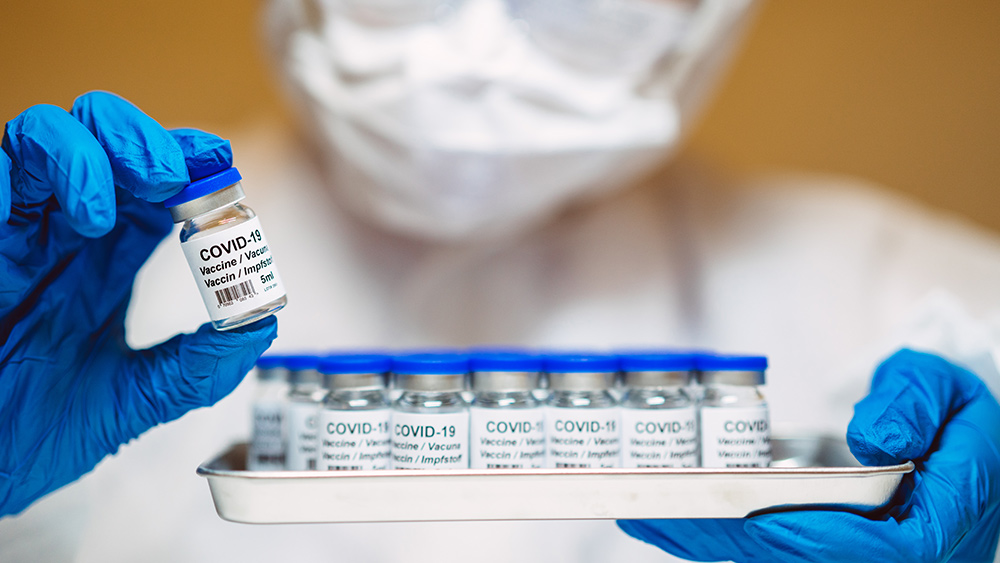 Parler
Parler Gab
Gab
- Light activity within an hour of eating reduces blood sugar spikes.
- A 10-minute post-meal walk or task helps muscles utilize glucose efficiently.
- Research shows cycling 45 minutes post-meal lowered blood sugar by 0.44 mmol/L.
- Even short post-meal movements like standing increase calorie burn and fat metabolism.
- Experts advise integrating simple exercise to manage prediabetes and improve metabolic health.
The science of movement: Why your muscles matter post-meal
Biochemist Dr. Jessie Inchauspe, author and podcast contributor, explains that muscle contractions act as a natural glucose sink. “When muscles contract, they pull energy directly from bloodstream glucose,” she says. This process, outlined in a May 2025 mindbodygreen interview, highlights how even low-intensity postprandial activity (e.g., walking, dancing, or household tasks) can prevent post-meal glucose spikes. The mechanism is simple: food digestion releases glucose into the blood, and active muscles absorb this fuel, reducing insulin burden. A 2024 Ask the Doctors analysis further corroborates this, noting that post-meal activity increases insulin sensitivity, aiding glucose uptake by muscles and cells. Consequently, blood sugar spikes subside, lowering risks of cardiovascular strain and type 2 diabetes progression.Timing and simplicity key to success
A landmark 2023 randomized trial in the Journal of Clinical Nutrition revealed optimal timing for post-meal movement. Participants who waited 45 minutes to start light cycling reduced peak glucose levels by 0.44 mmol/L—a clinically significant drop—compared to sedentary individuals. Conversely, starting activity too soon (e.g., 15 minutes post-meal) negligibly affected outcomes, underscoring the need for a brief post-ingestion downtime. Historical context sheds light on this shift: past dietary advice focused solely on food choices, while modern science now integrates behavioral nudges. “The 1980s focused on ‘fat-free’ diets, but today’s research recognizes that when and how we move matters as much as what we eat,” says Dr. James White, epidemiologist at the University of Sydney.Moving beyond the gym: Simple habits with big returns
While the Mayo Clinic’s 15-minute post-meal walk halved sugar spikes in one study, Dr. Levine’s 2022 research at Stanford expanded on flexibility. “Even standing at your desk boosts calorie burn by 10%, while micro-movements—stretching, walking the dog—add up to 1,000 calories burned weekly,” he notes. For desk-bound professionals, this translates to actionable benefits without drastic lifestyle overhauls. Practical applications abound:- Prioritize light activity between 30 to 60 minutes post-meal.
- Replace 30 minutes of screen time with yard work or pet walks.
- Engage in tasks like meal cleanup or social strolls to “earn” your digestion.
A call for cultural shifts in wellness
As diabetes statistics soar—global diagnoses are projected to hit 783 million by 2045—the urgency for accessible preventive measures has never been higher. Post-meal movement addresses not only metabolic health but also mental health, social engagement and longevity. Dr. White echoes this sentiment: “This isn’t just about blood sugar; it’s a microcosm of how small, habitual changes can uproot chronic disease.” For individuals and policymakers alike, championing post-meal activity could redefine public health strategies, transforming silent blood sugar threats into opportunities for widespread empowerment. Sources for this article include: MindBodyGreen.com Ncbi.nlm.nih.gov UCLAHealth.orgStudy: BEETROOT JUICE may hold the key to healthier aging
By Ava Grace // Share
Top fruits to boost your health and the ones to avoid, according to a nutrition expert
By Belle Carter // Share
Japanese walking: The TikTok-backed fitness trend with science on its side
By Ava Grace // Share
Ginger’s hidden power: A natural weapon against autoimmune inflammation
By Ava Grace // Share
Governments continue to obscure COVID-19 vaccine data amid rising concerns over excess deaths
By patricklewis // Share
Tech giant Microsoft backs EXTINCTION with its support of carbon capture programs
By ramontomeydw // Share
Germany to resume arms exports to Israel despite repeated ceasefire violations
By isabelle // Share










